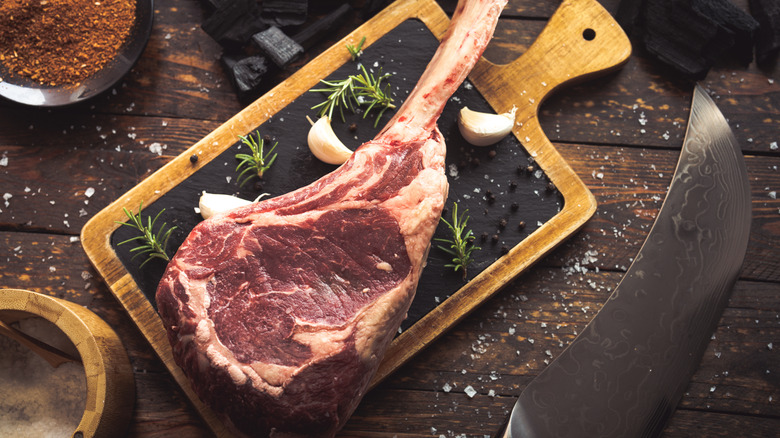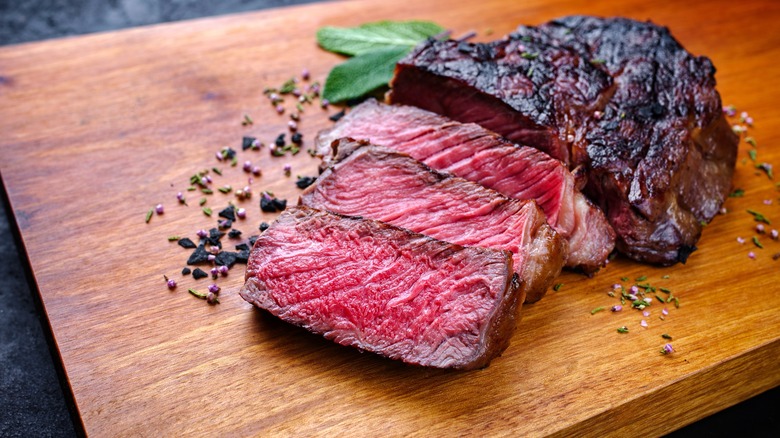The Tell-Tale Sign Your Dry Aged Steak Is Ready To Cook
Good things are worth the wait and this tenet definitely applies to food. Cheese and wine get better with time, and apparently, so does steak. As beef gets older during the dry-aging process, it grows more tender and flavorful. If you're impatiently waiting to get a taste, looking at the color of your dry-aged steak is a surefire way to know that it's ready to cook.
With most things in our kitchens, the producers determine when they're ready for consumption. A distillery takes the whiskey out of the barrel and a cheesemonger knows when to send a wheel off to the store. But you may not find dry-aged steak at the grocery store, so it's up to you to know when to make the call. Part of what makes dry-aged beef unique is the depth it takes on as it ages; eating it before its prime takes away from the glory of it. To know when the steak is ready to cook, remove the outer layer. A dark red color indicates that the beef has been properly aged. The meat may also take on a brownish color with time, which is normal with dry-aged steaks.
What you don't want to see on beef is a green tinge. This, along with a rotten smell and slimy texture, is a tell-tale sign your dry-aged steak has gone bad. Leaving the steak to age for 14 days is enough for the taste to develop, but for the best results, go for 21 days.
How long can you dry age steak?
Although 21 days is the recommended minimum amount of time to dry age steak for the best flavor and texture, you can leave it for much longer. The longer steak is aged, the more time it has to develop that sought after nuttiness and tender mouthfeel. There really is no set cut off time for how long you can age beef. Some people go up to 50 days to experience the supple tenderness and potent beefiness that spring up around that age. Hypothetically, you could extend it to 65 days, but the steak may shrink up far too much at that point.
Even if you leave your steak for 100 days, it's hard for it to spoil under the right conditions. Steak is meant to be dry-aged at around 34 degrees Fahrenheit with a humidity level in the 65-85% range. If it starts to hover above those numbers, your steak may start to exhibit the aforementioned signs of spoilage. Yet even if the steak looks bad, it doesn't mean it's not safe to eat. It's common for steak to get mold around 30 days into the aging process. It develops on the outer layer, which you can cut off. If the steak still has that vibrant, deep red color on the inside, it's safe to eat.

